Rice Canyon Oil Artifacts
There are a lot of oil-related artifacts in Rice Canyon. Besides the seven uncapped well heads (shown on the oil history page), there was also some very large artifacts, highlighted by the wooden band wheel. The only other wooden wheel in the canyons is found at the replica derrick at Johnson Park in Pico Canyon.

Here is a nearly destroyed wooden band wheel with the metal axle and flange in a gully below a well site. It was obviously pushed over the side for some reason. The wood is rotting away and the whole site is overgrown with poison oak. I was able to see the marking on the top of the metal 36 inch diameter flange and it said "Union Tool Company, Torrance Cal" with a number of "G-1300". (photo taken 11/18/2008)

Closer view. (11/18/2008)

This massive object is a calf wheel shaft. The shaft is one foot in diameter and a little over six feet long. The calf wheel was used to raise and lower casing for the well. (10/26/2008)

Calf wheel shaft from the 1914 Fairbanks Morse Oil Well Supply Catalog

This is one end of the shaft. It has a "2719" on it. The maximum diameter on this end is 32 inches. (11/18/2008)

Here is a side view of the end. (11/18/2008)

On the other side of the above end is this - "Pat Jan 10 1911". (10/26/2008)
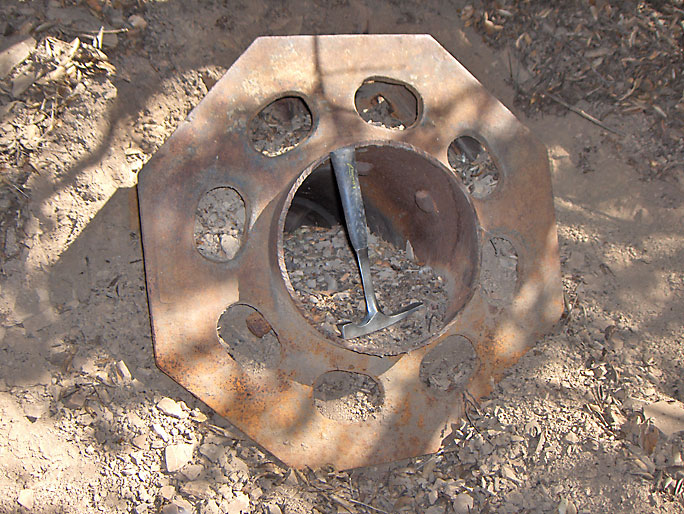
Here is the end of a different object. It also has about a one foot diameter shaft, although the shaft looks like it was cut off on this end. It would be too much work to dig it out. Maybe it is another style of calf wheel shaft. (11/18/2008)

A slightly different angle. (11/18/2008)

Each of the eight sides (that I could see) has the same unusual four hole pattern as seen here. The one foot shaft extends into the slope. (11/18/2008)
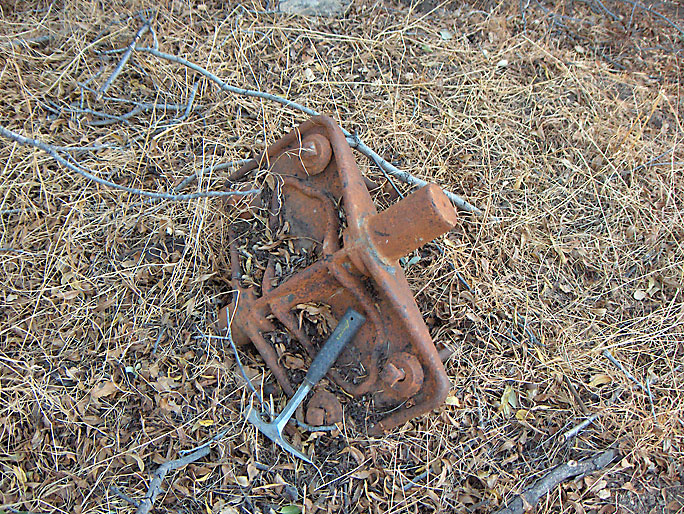
Part of the center irons for a rig with a walking beam. This part is called a saddle. The walking beam rested on the flat part so it is upside down here. (11/18/2008)
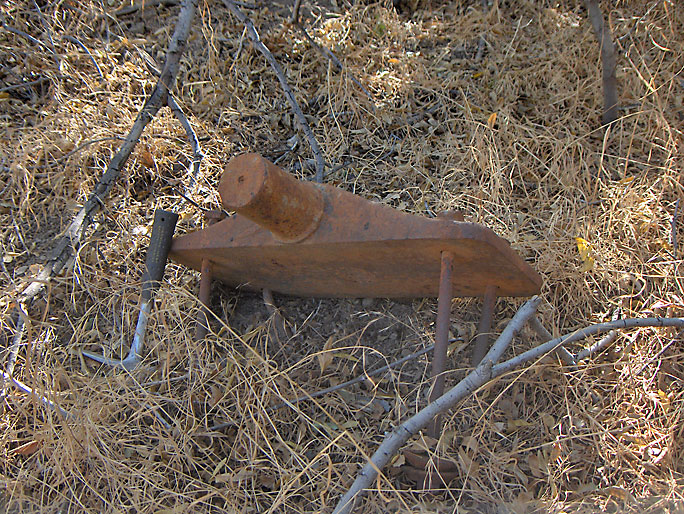
View of flat side of saddle showing the bolts used to hold down the wooden walking beam. (10/26/2008)

Brake band with the staple on one end and the lever on the other. Brake bands are used on bull wheels and calf wheels. (11/18/2008)

Large section of riveted well casing probably pulled from the nearby well. Riveted casing (also called stovepipe) was used for the upper portion of the well to keep the sides from caving in. (11/18/2008)
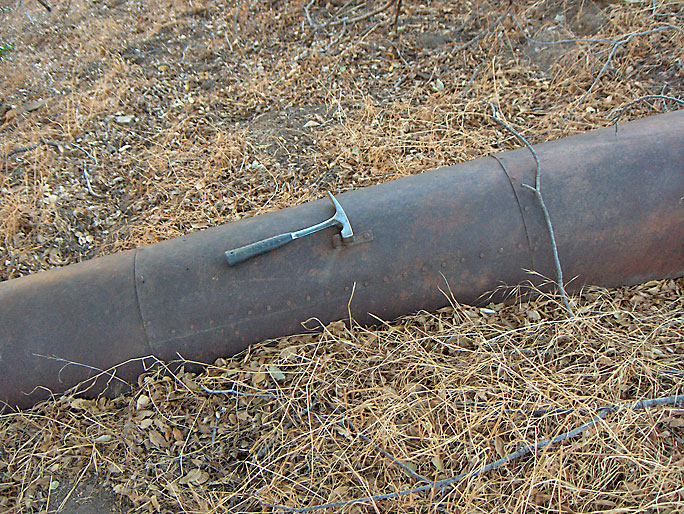
This shows the riveting. (11/18/2008)
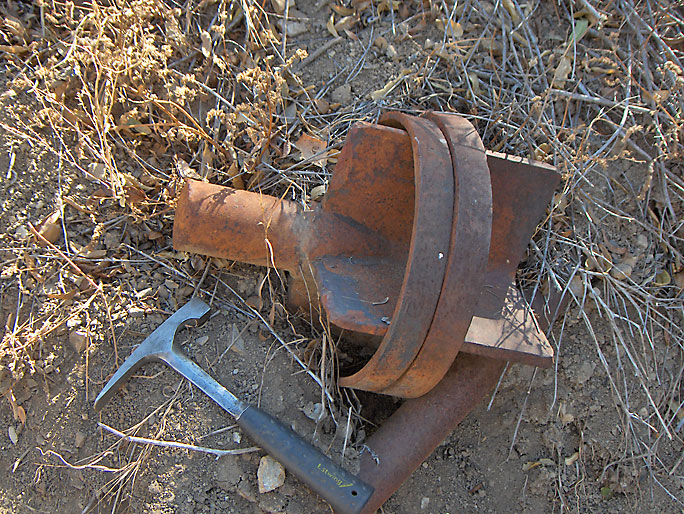
A wing gudgeon. One was placed at each end of a wooden shaft. The butt ends of the shaft were mortised so that the wings could be inserted leaving the cylindrical parts of the gudgeon projecting from each end of the shaft. (10/26/2008)
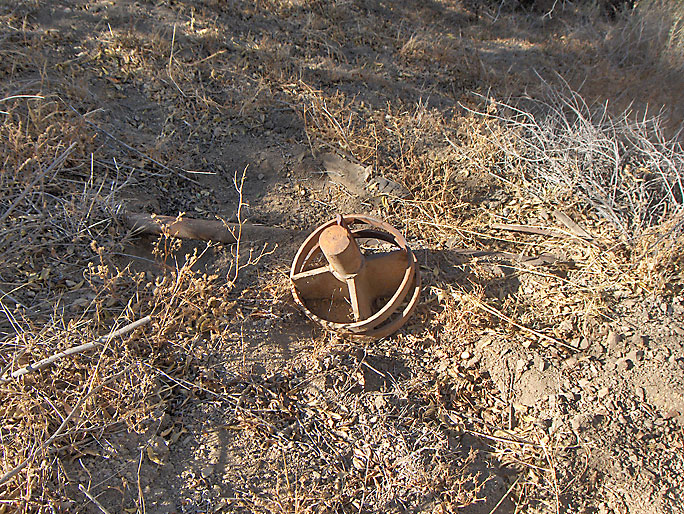
Another view. (10/26/2008)
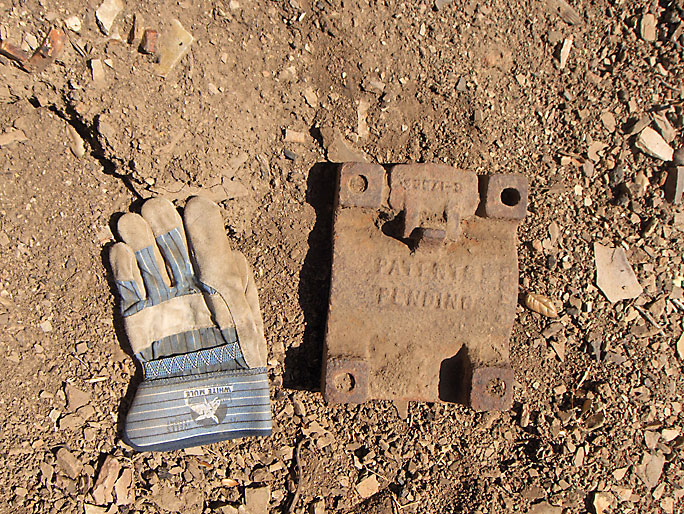
This is a jack post or calf wheel box. This side is bolted to the post. (11/18/2008)
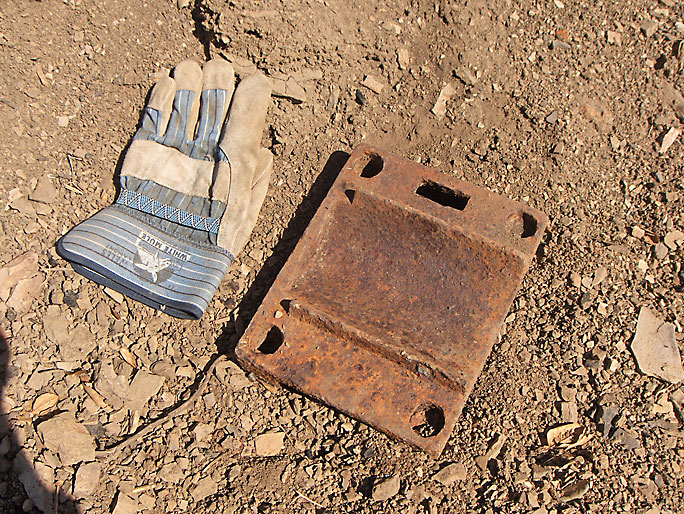
The other side faces up and would hold the end of a gudgeon. There would be another piece of hardware above this piece holding the gudgeon in place as it rotates with the shaft. (11/18/2008)

Riveted barrel on a steep slope. (11/18/2008)
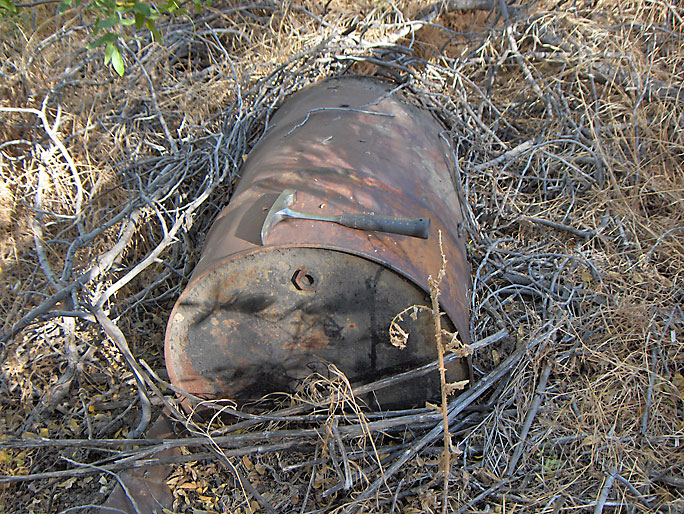
Another barrel. (10/26/2008)
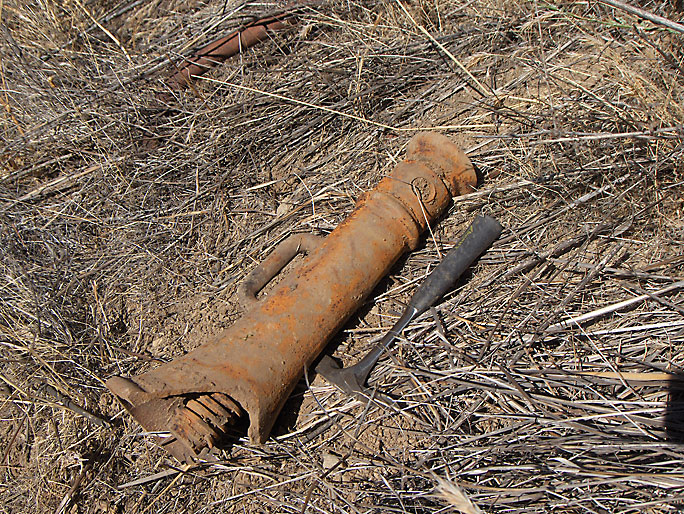
This looks like a ball bearing screw jack. The ballbearing multiplies power because it reduces friction. Jacks are common around oil wells. (11/18/2008)

There is a handhold on one side. (11/18/2008)
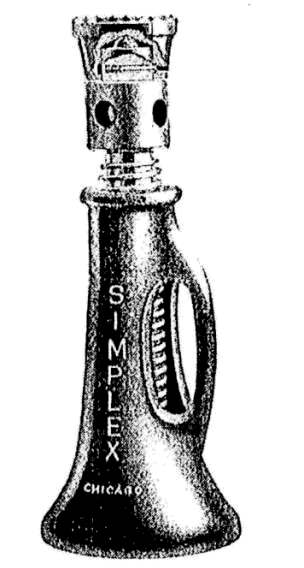
This is a screw jack from the Star Drilling Tools Catalog Number 371 of 1937
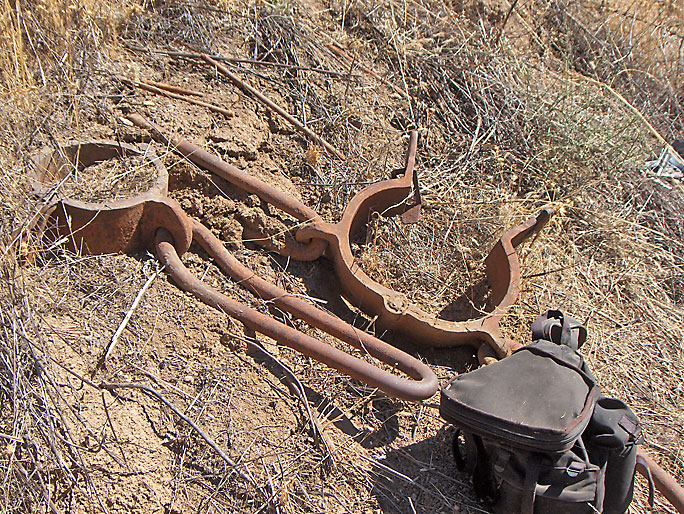
These are heavy-duty elevators. They are used to lower or raise tubing, drive pipes or casing into the well. The clamp-like objects are latches. (11/18/2008)

This is at the site of the Rice 3 well. There are very few artifacts at the three Standard well sites (Rice 1, Rice 2, and Rice 3). Standard usually did a good job of cleaning up their well sites. (10/26/2008)
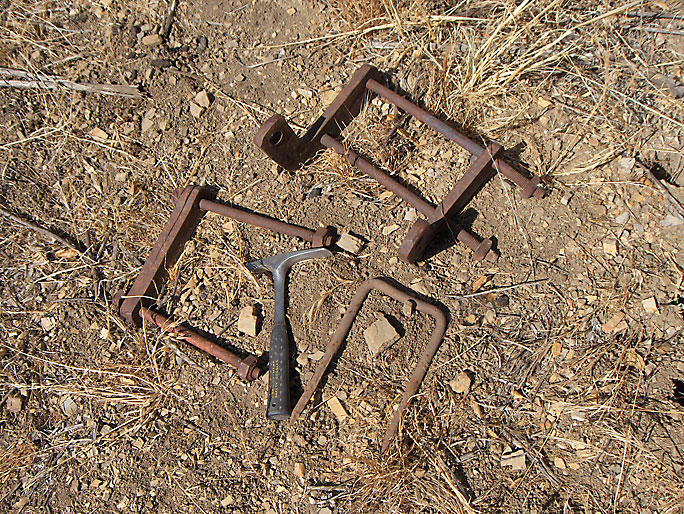
Misc. hardware. (10/26/2008)

This looks like the threads of a screw jack at this well site. (11/18/2008)

This was the location of a steam boiler with the smoke stack still there. The boiler was enclosed with bricks. The smoke stack is two feet in diameter and about 25 feet long. (11/18/2008)

(11/18/2008)

(11/18/2008)

(11/18/2008)

I found this at the boiler site. This shows that it was constructed in 1935 by "McC". This is Ernest E. McCartney, the owner of the Inspiration Oil Company, the owner of the land and wells from 1934 - 1937 (see oil history page). (11/18/2008)
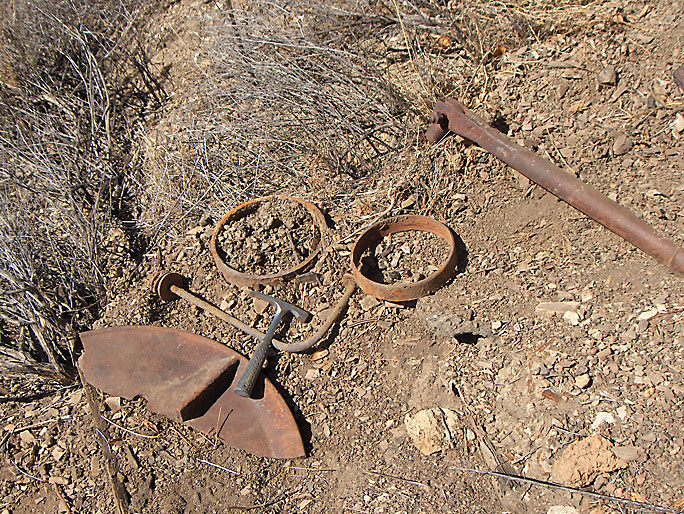
More hardware. (11/18/2008)
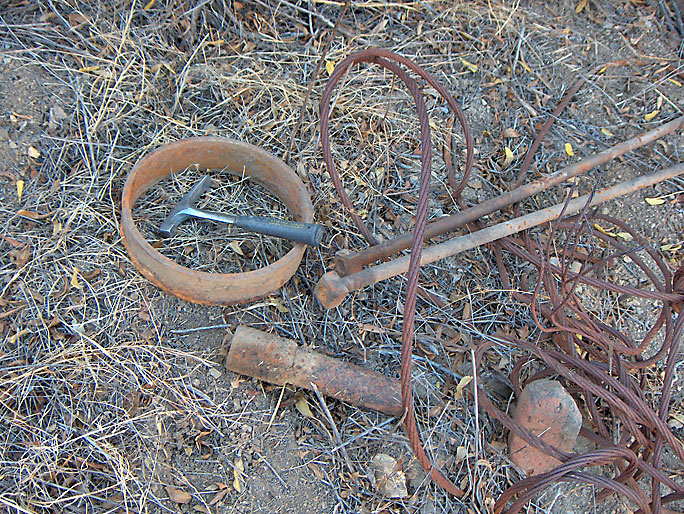
(11/18/2008)
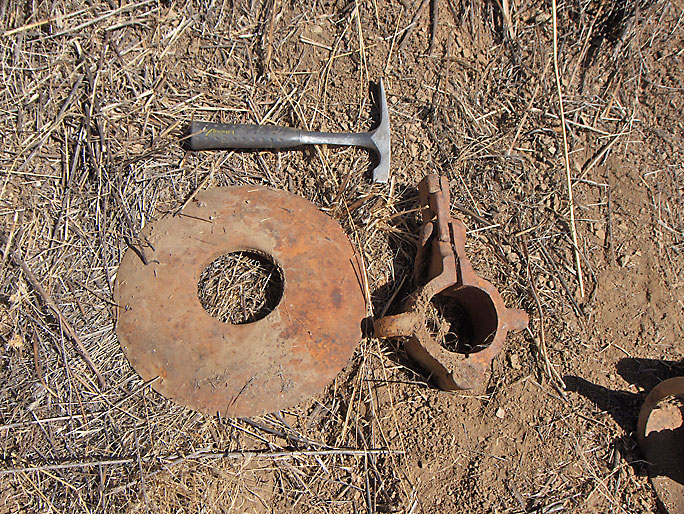
(11/18/2008)

This looks like part of a vehicle that was pushed off the above slope. (11/18/2008)
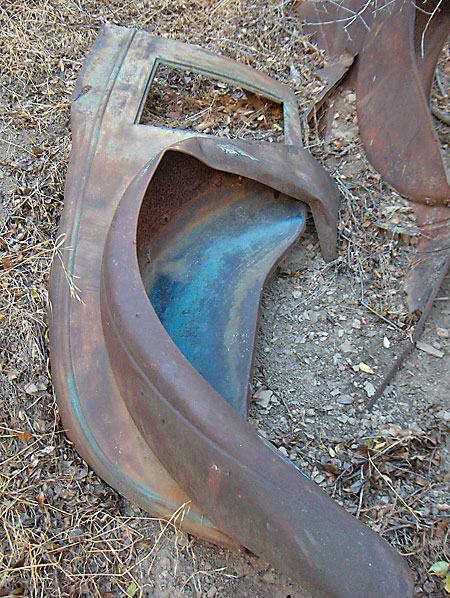
Another view. (11/18/2008)






































